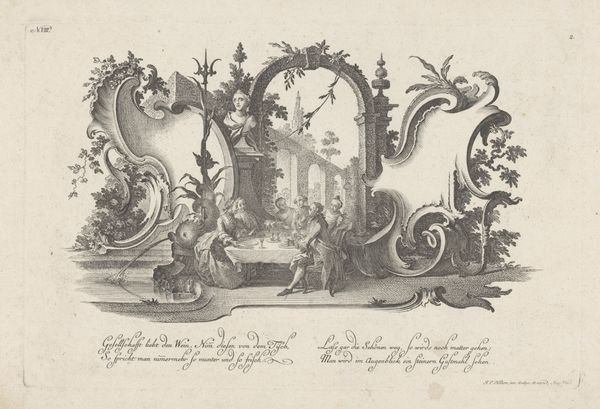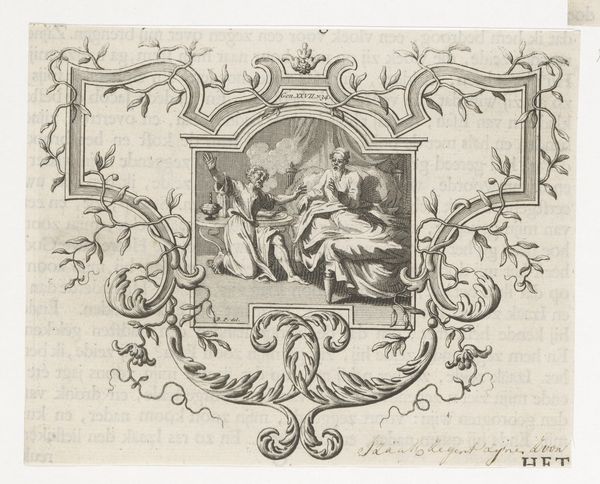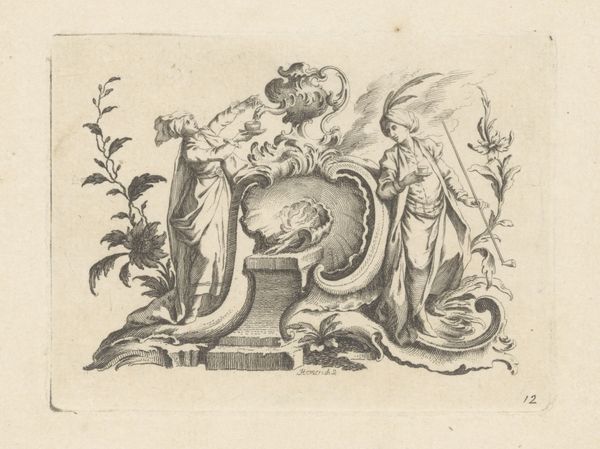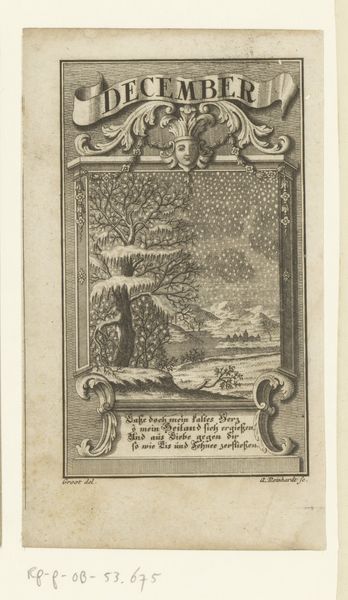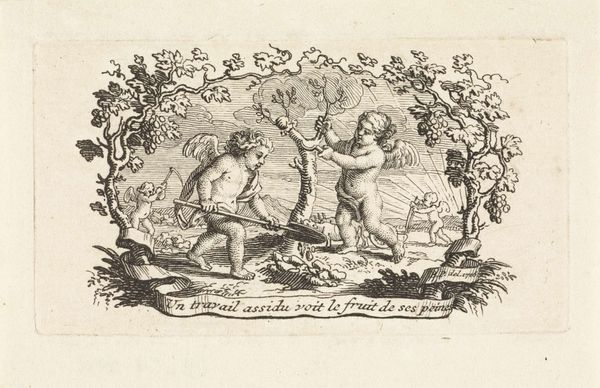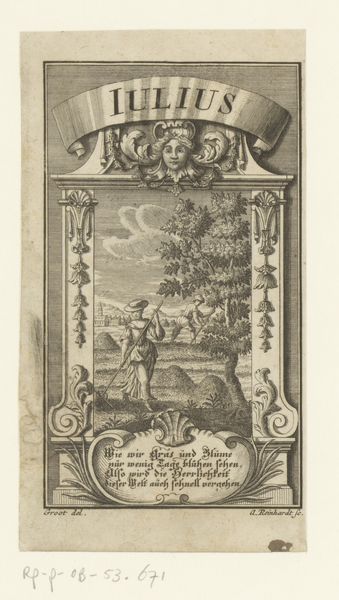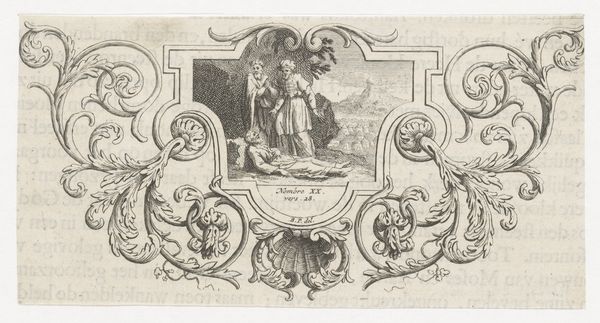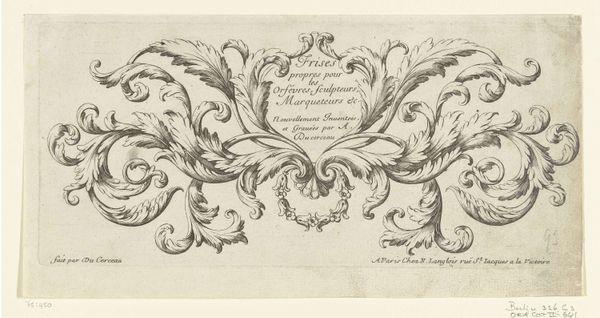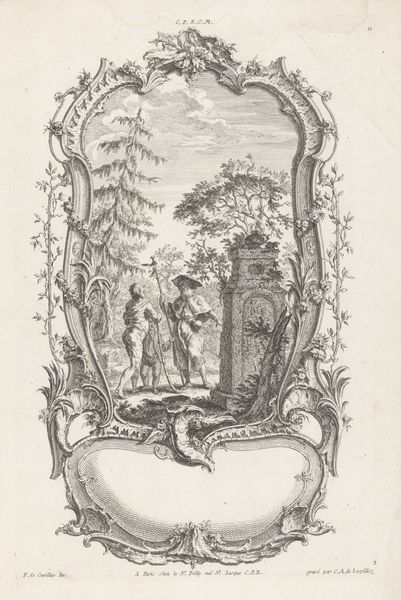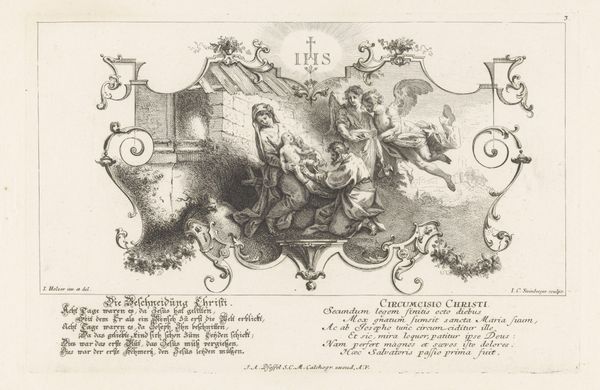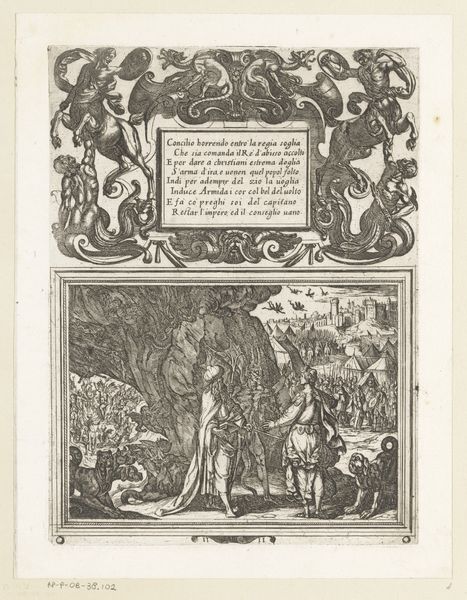
print, engraving, architecture
#
comic strip sketch
#
baroque
#
pen drawing
# print
#
pen illustration
#
pen sketch
#
personal sketchbook
#
sketchwork
#
geometric
#
pen-ink sketch
#
pen work
#
sketchbook drawing
#
sketchbook art
#
engraving
#
architecture
Dimensions: height 183 mm, width 248 mm
Copyright: Rijks Museum: Open Domain
Editor: So, this print by Franz Xaver Jungwirth, "Omlijsting met buste, draak en wapens," from 1738… it's incredibly detailed, almost like a baroque fever dream! What strikes me is how everything is crammed together, a real feast for the eyes. What's your take on this piece? Curator: It's fascinating how these decorative prints functioned within 18th-century society. They weren't just art, they were tools for shaping taste and displaying status. Look at the central text: it credits Cuvillies, a court architect. This print serves as an advertisement and a marker of cultural capital for the patrons involved. Who was buying and circulating these prints? What messages were they hoping to convey? Editor: So it's less about pure artistry and more about social positioning? The dragon and bust must have symbolic value then, beyond decoration. Curator: Precisely. Consider the baroque style itself - it was promoted by the Catholic church to impress, persuade, and overwhelm through spectacle, which was crucial to counter Reformation theology and maintain their power. We have a Dragon here too, a symbol used to express strength and ward off evil influences. How did the circulation of prints such as these impact the cultural discourse and consumption within noble circles? What sort of socio-economic influence do you suppose that bestows on those aristocratic families commissioning Jungwirth? Editor: It's like visual propaganda, reinforcing existing power structures. I hadn't considered the audience or how the print was actively shaping society at the time. Thanks, that’s really made me think about Baroque art in a completely different way. Curator: Indeed, by questioning the roles art played we uncover history behind its imagery, helping contextualize its position within socio-political discourse and historical record.
Comments
No comments
Be the first to comment and join the conversation on the ultimate creative platform.
